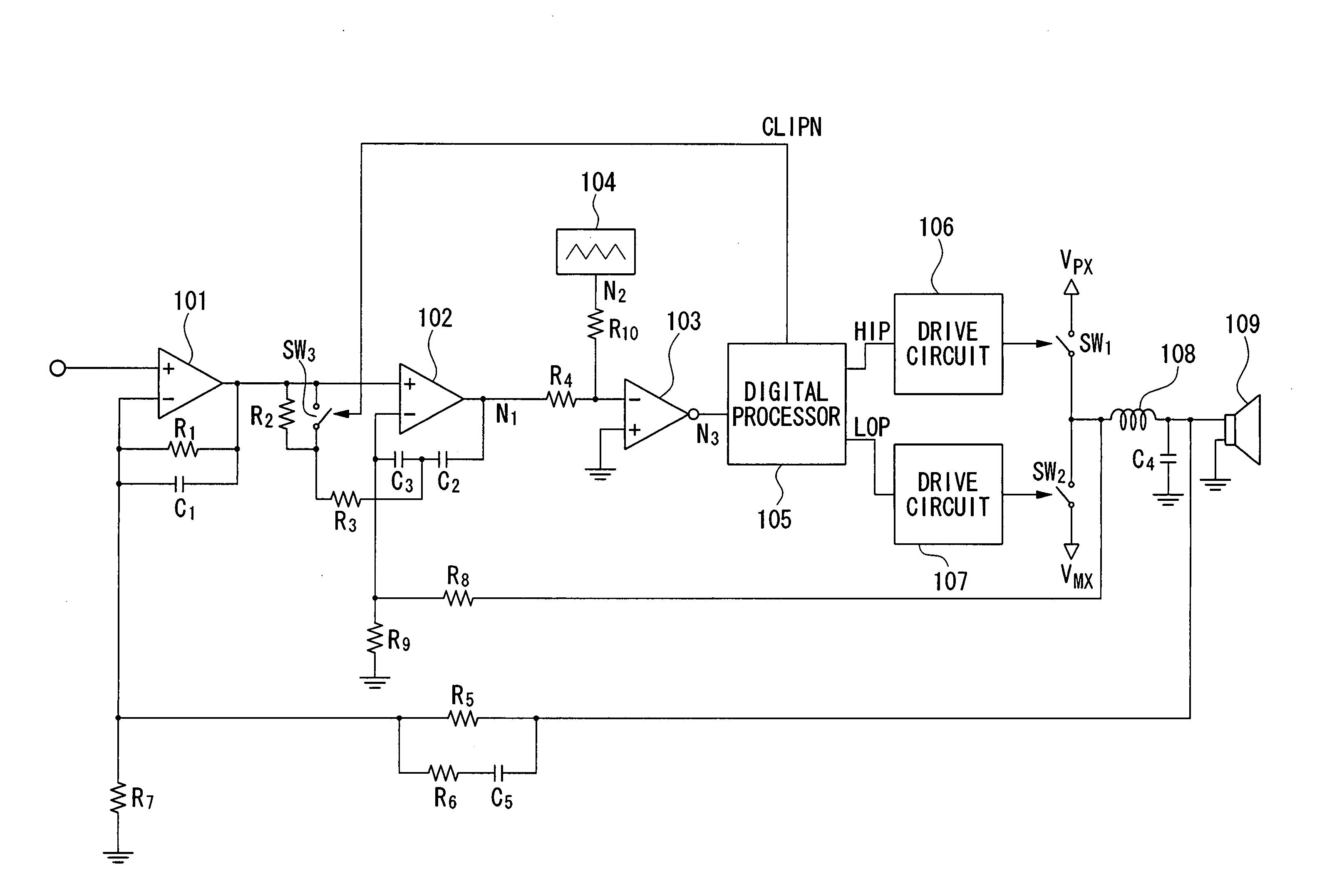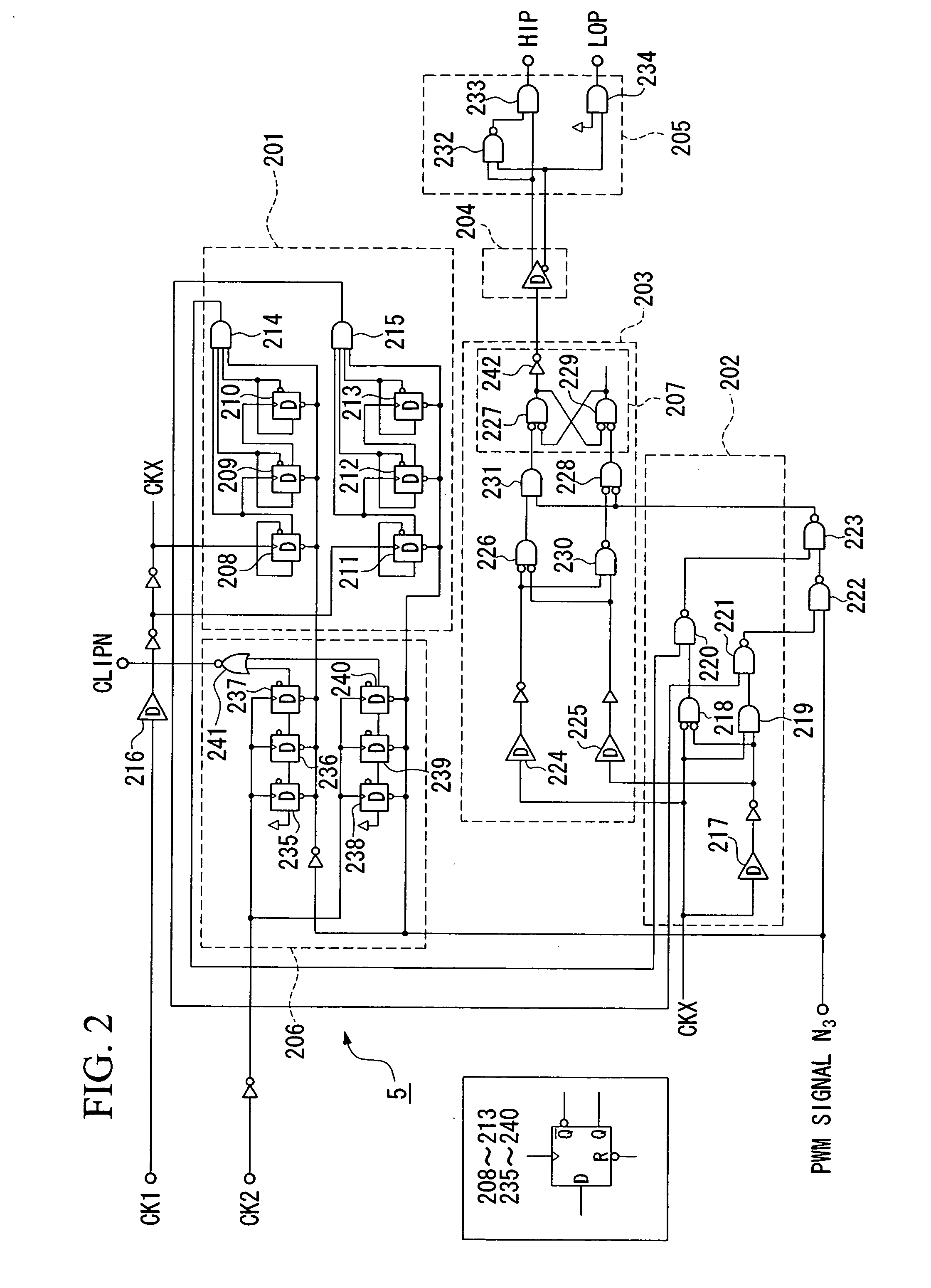Pulse-width modulation amplifier and suppression of clipping therefor
a pulse-width modulation and amplifier technology, applied in the direction of electrical transducers, transducer casings/cabinets/supports, gain control, etc., can solve the problems of circuit operation being interrupted or become unstable, distortion of output waveforms, and affecting the operation of circuits, so as to reduce power use efficiency, avoid the effect of excessive current, and prevent excessive curren
- Summary
- Abstract
- Description
- Claims
- Application Information
AI Technical Summary
Benefits of technology
Problems solved by technology
Method used
Image
Examples
first embodiment
1. First Embodiment
[0044]FIG. 1 is a block diagram showing the overall constitution of a class-D amplifier using pulse-width modulation in accordance with a first embodiment of the invention.
[0045] Reference numeral 101 designates an operational amplifier whose non-inverting input terminal is connected to an input terminal receiving an analog input signal. A resistor R1 is connected between the inverting input terminal and output terminal of the operational amplifier 101. A capacitor C1 is connected between the inverting input terminal and output terminal of the operational amplifier 101.
[0046] Reference numeral 102 designates an operational amplifier whose non-inverting input terminal is connected to the output terminal of the operational amplifier 101. Capacitors C2 and C3 are connected in series and are inserted between the inverting input terminal and output terminal of the operational amplifier 102. A resistor R3 and a switch SW3 are connected in series and are inserted betwe...
second embodiment
2. Second Embodiment
[0074]FIG. 7 is a block diagram showing the overall constitution of a class-D amplifier using pulse-width modulation in accordance with a second embodiment of the invention, wherein parts identical to those shown in FIG. 1 are designated by the same reference numerals; hence, the detailed description thereof will be omitted.
[0075] The second embodiment differs from the first embodiment that the digital processor 105 is replaced with a clipping detection circuit 400, and the PWM signal N3 output from the operational amplifier 103 is directly applied to the switches SW1 and SW2 without the intervention of the drive circuits 106 and 107.
[0076]FIG. 8 is a circuit diagram showing the detailed constitution of the clipping detection circuit 400 shown in FIG. 7. Reference numeral 401 designates an input terminal for inputting a clock pulse signal CK, which is used as a carrier wave for pulse-width modulation and whose frequency matches the frequency of a triangular wav...
PUM
 Login to View More
Login to View More Abstract
Description
Claims
Application Information
 Login to View More
Login to View More - R&D
- Intellectual Property
- Life Sciences
- Materials
- Tech Scout
- Unparalleled Data Quality
- Higher Quality Content
- 60% Fewer Hallucinations
Browse by: Latest US Patents, China's latest patents, Technical Efficacy Thesaurus, Application Domain, Technology Topic, Popular Technical Reports.
© 2025 PatSnap. All rights reserved.Legal|Privacy policy|Modern Slavery Act Transparency Statement|Sitemap|About US| Contact US: help@patsnap.com



